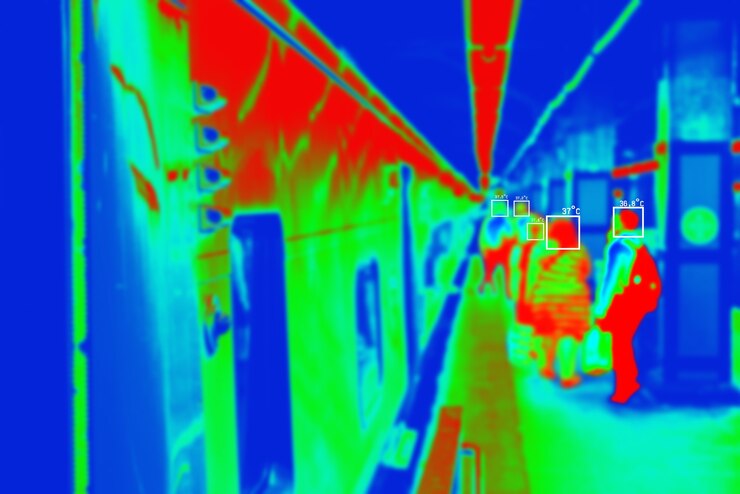Thermal imaging technology has significantly advanced in recent years, finding its way into various industry applications. Particularly, drones equipped with thermal cameras have revolutionized operations in fields ranging from agriculture to emergency response.
These aerial devices can capture heat signatures invisible to the naked eye, providing invaluable data that can be used in numerous practical scenarios. A notable example of this technology is advanced models like the Skydio X10D Drone, designed to offer precision, efficiency, and versatility in capturing thermal data.
Understanding Thermal Imaging on Drones
Thermal imaging cameras on drones detect infrared energy (heat) emitted by objects, people, or materials on the ground. This technology does not require lighting to see, making it especially useful in night-time or obscured visibility conditions. The camera translates heat into visible images, allowing operators to evaluate the heat emitted by different objects and environments. This capability is crucial for various applications, including monitoring thermal pollution, identifying building heat leaks, or locating lost individuals in search and rescue missions. This technology enables the quick detection of environmental changes, offering critical data during ecological monitoring efforts, such as observing volcanic activity or forest fire progression.
Supporting Law Enforcement and Security
Law enforcement agencies can utilize UAVs like the Skydio X10D Drone for various operations, including surveillance, suspect tracking, and scene assessment. The ability to monitor from a distance with thermal use helps maintain the element of surprise. It ensures officer safety.
They can provide a live feed of heat signatures, making tracking movements without being detected easier, thereby enhancing night-time operations and tactical responses. These capabilities are particularly beneficial in large-scale public events or complex environments where traditional surveillance methods may fall short, offering a bird ‘ s-eye view that is pivotal for comprehensive security management.
Enhancing Wildfire Management
Thermal imaging drones are becoming indispensable in managing wildfires, providing critical information that can guide firefighting efforts. They can fly over active fire zones to map out hot spots and precisely track the direction of the fire spread. This capability allows firefighters to strategize their approaches more effectively, focusing resources where they are most needed and avoiding areas that pose high risks.
The real-time data these machines provide helps evacuate affected areas by identifying safe routes and potential dangers, thereby minimizing the risk to human life and increasing the effectiveness of containment efforts. In addition to tracking and mapping, thermal UVAs can assist in the post-fire assessment, helping to evaluate the damage and determine the areas that may need rehabilitation to prevent further environmental degradation. This facilitates quicker recovery for ecosystems and reduces long-term ecological impacts.
Improving Environmental Research and Monitoring
In environmental science, UVAs with thermal cameras offer a non-intrusive way to conduct detailed ecological studies. Researchers can use them to monitor wildlife populations, particularly nocturnal animals that are difficult to observe with traditional methods. Thermal UVAs detect illegal logging or poaching by picking up vehicle heat signatures and human presence in restricted or protected areas.
They are used to monitor changes in environmental conditions, such as the effects of climate change on glacier melting or water temperature variations in lakes and rivers, providing valuable data that can inform conservation strategies and policy-making. By leveraging thermal imaging, researchers can also detect subtle environmental changes over time, such as the gradual increase in temperature of a specific habitat, providing early warnings for potential ecological shifts. This proactive monitoring supports the development of timely conservation actions, helping to preserve biodiversity.
Monitoring Power Lines and Energy Infrastructure
The energy sector benefits significantly from using them in the routine inspection and maintenance of power lines and other critical infrastructure. They can quickly identify overheating joints, components, or insulation failures that may lead to power outages or catastrophic failures. By regularly conducting these inspections, utility companies can address potential issues before they escalate into more significant problems, ensuring continuous service and reliability.
They can inspect solar panels and wind turbines, helping maximize efficiency by pinpointing areas that require maintenance or are not operating optimally, thus optimizing the overall performance of renewable energy sources. They also enhance worker safety by reducing the need to physically access high-voltage environments for initial inspections, allowing preliminary evaluations to be conducted from a safe distance. Their use helps comply with regulatory requirements for infrastructure maintenance, ensuring that energy providers meet safety standards efficiently.
The profound impact of thermal imaging capabilities in drones across multiple sectors illustrates a significant technological leap forward. From enhancing public safety and emergency response to revolutionizing environmental monitoring and optimizing infrastructure maintenance, thermal drones offer advantages that transcend traditional methods.
These sophisticated aerial tools increase the efficiency and effectiveness of operations and significantly mitigate risks, reduce costs, and promote sustainability. As thermal imaging technology continues to evolve and integrate with other advanced technologies, its applications are set to expand even further, promising to unlock new potentials and redefine precision in various fields. The future of drone technology, equipped with thermal imaging, is poised to offer even more revolutionary solutions that will continue to shape and benefit industries worldwide.




0 Comments